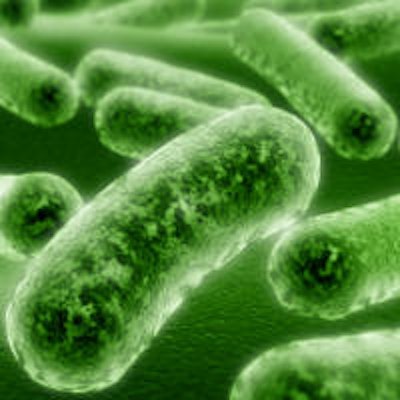
Coating toothbrush bristles with chlorhexidine appears to reduce concentrations of some harmful oral bacteria more than coating them with silver nanoparticles.
A study presented at the International Association for Dental Research's 2013 annual meeting found that chlorhexidine-coated toothbrushes (Butler GUM) reduced concentrations of Streptococcus mutans by 99.8% 16 hours after the toothbrushes were immersed for three minutes in a microbe-containing suspension. The silver nanoparticle-coated toothbrushes (Mouth Watchers) reduced the bugs' concentration by 93% at 16 hours. Neither had a statistically significant effect on levels of Candida albicans.
"Mouth Watchers' patent-pending, innovative antibacterial bristles naturally eliminate 99.9% of bacteria to help your teeth, gums, and body stay healthier," the Mouth Watchers website claims.
As lead investigator Lt. Col. Jeremy Hamal, DDS, explains, the Mouth Watchers brushes are relatively new to the market, and the only available research on them is from Korea, where these brushes are manufactured. Moreover, their effectiveness in toothbrush disinfection has proved controversial in prior studies, he noted.
"So I decided to compare them to a control and also to the chlorhexidine brush, which has not been the subject of any independent study to date," said Dr. Hamal, who is an AEGD-2 senior resident at the Dunn Dental Clinic, Joint Base San Antonio - Lackland, TX. "The GUM brush manufacturers have made no overt claims of percent reduction in microbes."
Comparing bristles to bristles
The study was funded by the Wilford Hall Clinical Research Division. Dr. Hamal and his group used 80 each of the silver-nanoparticle and chlorhexidine toothbrushes, along with 80 toothbrushes that did not have coated bristles. They immersed half of each type of toothbrush for three minutes in a solution of Streptococcus mutans and the other half in a Candida albicans solution.
They immediately immersed one-quarter of each type of toothbrush in sterile saline and mixed them vigorously for 15 minutes to remove all of the organisms. At eight hours after initial immersion they repeated this (mixing to remove microorganisms) with another 20 of each type of toothbrush. They repeated this, each time with another set of 20 of each type of toothbrush, at eight and 16 hours post-initial immersion. They then diluted and placed on agar plates the resulting saline solutions. After incubating the plates, the investigators counted the resulting colony-forming units.
Reduction in colony-forming units at 3 time periods postimmersion
|
||||||||||||||||
| *p < 0.05 compared to control and silver-nanoparticle toothbrushes |
The chlorhexidine-coated brushes brushed off more of the S. mutans at all three time periods compared to the other two types of toothbrushes. However, not even the chlorhexidine-coated toothbrushes ever reached the 99.9%-reduction level, which is "a benchmark for disinfection," according to Dr. Hamal.
With the C. albicans groups, the chlorhexidine-coated toothbrushes' level of disinfection peaked at 97.5% at 24 hours, while the nanoparticle-coated toothbrushes reached 99.5% disinfection at this time period. However, Dr. Hamal's team reported that none of the levels of disinfection were statistically significantly greater at any time period and between any of the types of brushes.
DrBicuspid.com queried Dr. Hamal about the potential for antibiotic resistance with the use of broad-based antimicrobial agents: "Antibiotic resistance is certainly a long-term problem in the management of infectious diseases; however, it is not my area of expertise, and I cannot comment on that," he responded.
Study disclosures
The views expressed in this study are those of the authors and do not reflect the official policy of the U.S. Air Force, the Department of Defense, or the U.S. government. The authors do not have any financial interest in the companies whose materials are discussed in this article.



















